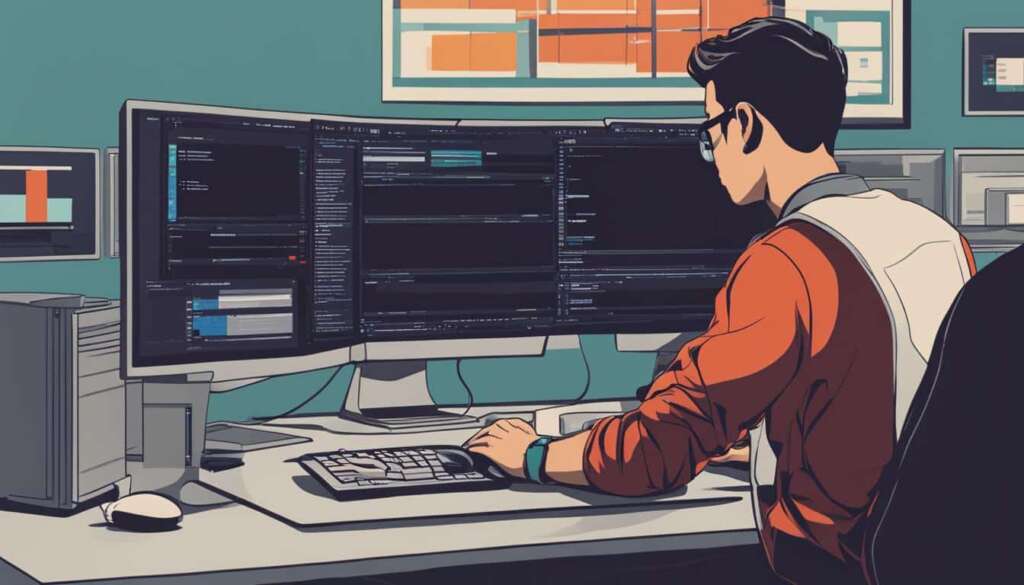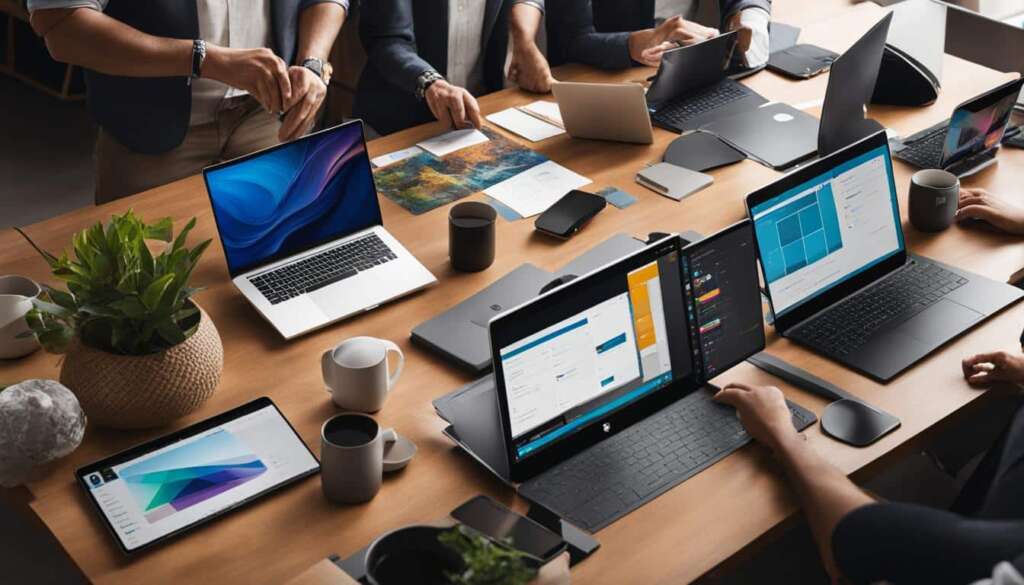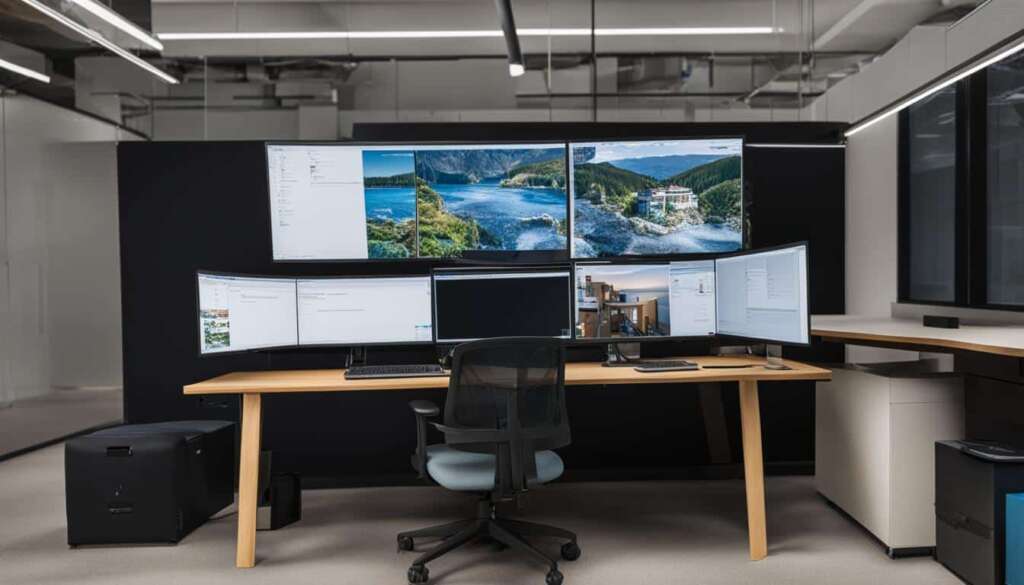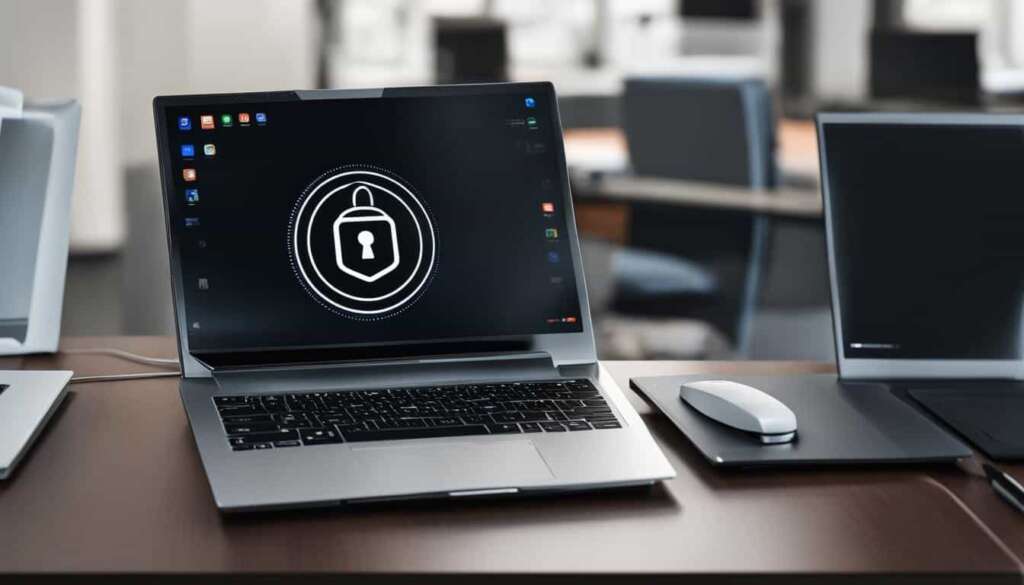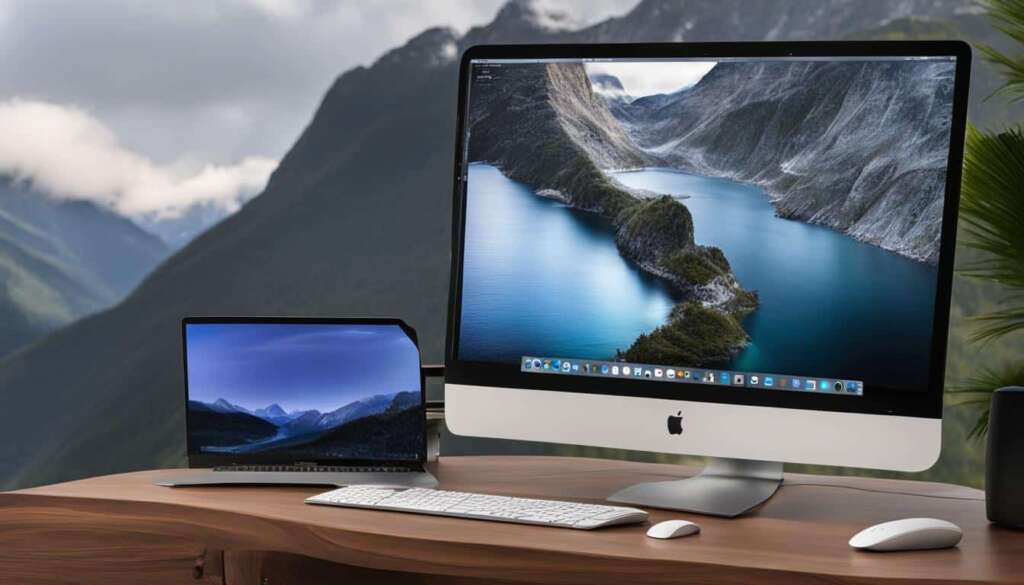Table of Contents
Are you looking for a seamless and efficient way to access and manage your workstations and servers remotely? Look no further than remote desktop software. With remote desktop connection capabilities, you can gain instant access to your resources from anywhere, at any time. Whether you need to provide technical support, collaborate with colleagues, or enhance your security features, remote desktop software has got you covered.
At ITarian, we offer a comprehensive remote desktop solution that provides unlimited access and a range of features to streamline your workflows and increase productivity. Our remote desktop software enables effortless file transfer, efficient technical support, seamless collaboration, and advanced security measures. Plus, with convenient remote desktop access, you can work on the go without any limitations.
In this guide, we will walk you through the process of setting up your remote desktop connection, navigating and controlling your remote desktop, and provide valuable tips and troubleshooting advice. By following our step-by-step instructions and incorporating our best practices, you can ensure a smooth and efficient remote desktop experience.
So, whether you’re an IT professional, a remote worker, or simply someone who needs flexible access to their resources, our remote desktop software is here to revolutionize your workflow. Get ready to harness the power of remote desktop connections and unlock a world of possibilities for your productivity.
Setting Up Your Remote Desktop
Setting up a remote desktop connection is a breeze with ITarian’s remote desktop software. Before you begin, it’s important to ensure that both the remote and host computers have the necessary software and hardware in place. Follow these steps to get started:
1. Install Remote Desktop Software:
Begin by installing ITarian’s remote desktop software on both the remote and host computers. This software will enable a seamless connection between the two devices, allowing for efficient remote access.
2. Check System Compatibility:
Verify that both computers meet the hardware requirements for remote desktop connections. This ensures a smooth experience without any performance issues. If necessary, upgrade the hardware to meet the specified requirements.
3. Configure Network Settings:
Properly configure your network settings to establish a stable connection. Ensure that firewalls and security settings allow remote desktop access. Consult your network administrator or IT department if you need assistance with network configurations.
4. Enable Remote Desktop:
On the host computer, enable remote desktop access in the system settings. This step allows the remote computer to establish a connection and access the host computer remotely. Refer to the operating system’s documentation for specific instructions on enabling remote desktop.
5. Establishing a Connection:
Once all the necessary software and settings are in place, you can initiate the connection. Open the remote desktop application and enter the IP address or hostname of the host computer. Follow the on-screen prompts to establish the connection.
6. Authentication Process:
For security purposes, the remote desktop connection requires authentication. Enter the required credentials, such as username and password, to verify your access. Once authenticated, you’ll be granted remote access to the host computer.
By following these steps, you can easily set up your remote desktop connection using ITarian’s reliable and user-friendly software. Enjoy seamless remote access and efficient collaboration with just a few simple configuration steps.
Once connected to your remote desktop, you have the ability to navigate and control the remote computer’s desktop. Familiarizing yourself with navigation tips and control functions can greatly enhance your remote access experience and increase your productivity. With remote desktop navigation, you can easily find and access the files, folders, and applications you need. Remote desktop control allows you to execute various tasks and operations on the remote computer, just as if you were physically present in front of it. This seamless control enables you to transfer files, install software, and perform other essential actions without needing to be in the same location as the remote device.
One key advantage of remote task execution is the ability to operate remotely without any time or geographical restrictions. For example, if you are working from home and need to execute a task on your office computer, you can do so easily using remote desktop control. You can launch applications, run scripts, and perform administrative functions seamlessly, all from the comfort of your home or any other location with an internet connection.
In addition to executing specific tasks, remote desktop control also allows you to monitor and troubleshoot the remote computer. You can view the desktop in real-time and identify any issues or errors that may arise. This level of access and control ensures that you can provide swift technical support, troubleshoot problems, and resolve issues promptly, avoiding any potential disruptions to your workflow.

Tips for a Smooth Remote Desktop Experience
To ensure a stable remote desktop connection and maximize productivity, it is essential to follow some key tips. By implementing these suggestions, you can enjoy a secure password and benefit from regular software updates that enhance performance and security.
- Use a stable, high-speed internet connection: A stable internet connection is crucial for a seamless remote desktop experience. Opt for a reliable internet service provider and ensure you have a strong, consistent connection to prevent disruptions during remote sessions.
- Create a secure password: Use a strong and unique password for your remote desktop connections. Avoid common or easily guessable passwords, and consider using a password manager to securely store and generate complex passwords.
- Keep your remote desktop software up-to-date: Regular software updates are essential for ensuring optimal performance and security. Stay informed about the latest versions of your remote desktop software and install updates promptly to benefit from bug fixes, new features, and enhanced security measures.
By following these tips, you can maintain a stable remote desktop connection while safeguarding your data and maximizing efficiency in your remote work processes.
An image illustrating the importance of a stable remote desktop connection.
Troubleshooting Common Remote Desktop Issues
Remote desktop connections can sometimes encounter issues, leading to frustration and decreased efficiency. Understanding and resolving these common problems is essential for maintaining a smooth remote desktop experience. By addressing network issues, authentication challenges, performance limitations, and security concerns, you can ensure optimal productivity and security in your remote work environment.
1. Network Issues
Network connectivity is crucial for establishing a remote desktop connection. If you’re experiencing connection failures, it’s important to check your network settings and ensure that you have a stable internet connection. Common network-related issues include:
- Unstable Wi-Fi connections
- Firewall restrictions blocking incoming connections
- High network latency causing delays and lag
- Network congestion affecting performance
To troubleshoot network issues, consider the following:
- Ensure your Wi-Fi signal is strong and stable.
- Check firewall settings to allow remote desktop connections.
- Optimize your network settings to reduce latency.
- Consider using a wired connection for more reliable performance.
2. Incorrect Credentials
Authentication is a crucial step in establishing a remote desktop connection. If you receive credential errors when attempting to connect, verify that you’re using the correct username and password. Common credential-related issues include:
- Mistyped or forgotten passwords
- Expired or disabled user accounts
- Incorrect domain or username
To troubleshoot incorrect credential issues, try the following:
- Double-check the spelling and capitalization of your password.
- Reset your password if necessary.
- Ensure that your user account is active and not expired.
- If using a domain, verify that you’re using the correct domain prefix and username.
3. Firewall Restrictions
Firewall settings can often interfere with remote desktop connections, blocking incoming connections and causing connection failures. Common firewall-related issues include:
- Blocked port for remote desktop protocol (RDP)
- Inadequate access privileges for remote desktop
To troubleshoot firewall restrictions, consider the following steps:
- Ensure that port 3389 (default RDP port) is open in your firewall settings.
- Check your firewall rules to allow inbound connections for remote desktop.
- Verify that you have the necessary administrative access to establish remote desktop connections.
4. Slow Performance and High Latency
Slow performance and high network latency can significantly impact your remote desktop experience, leading to delays, lag, and frustration. Common performance-related issues include:
- Resource-intensive programs running on the remote computer
- Inefficient graphics settings
- Insufficient bandwidth
To optimize performance and reduce latency, consider the following steps:
- Close unnecessary programs and processes running on the remote computer.
- Adjust graphics settings to prioritize performance over visual quality.
- Upgrade your internet connection to a higher bandwidth plan if possible.
5. Security Concerns
Remote desktop connections can pose security risks if not properly protected. Common security-related issues include:
- Connecting to unsecured networks
- Using weak and easily guessable passwords
- Running outdated or vulnerable remote desktop software
To address security concerns when using remote desktop, follow these best practices:
- Always connect to secure, trusted networks when accessing remote desktop.
- Use a strong, unique password that includes a combination of letters, numbers, and special characters.
- Regularly update your remote desktop software to the latest version to benefit from security patches and improvements.
By troubleshooting these common remote desktop issues, you can overcome technical challenges and ensure a seamless and secure remote work experience.

| Issue | Troubleshooting Steps |
|---|---|
| Network Issues | Check Wi-Fi stability Adjust firewall settings Optimize network settings |
| Incorrect Credentials | Verify username and password Reset password if necessary Check account status and domain |
| Firewall Restrictions | Open port 3389 Modify firewall rules Ensure administrative access |
| Slow Performance and High Latency | Close resource-intensive programs Adjust graphics settings Upgrade internet bandwidth |
| Security Concerns | Connect to secure networks Use strong passwords Update remote desktop software |
Conclusion
Efficient remote desktop connections are a game-changer for businesses looking to increase productivity and streamline workflows. With ITarian’s remote desktop software, you have the power to access your workstations and servers from anywhere, at any time, allowing for instant support, seamless collaboration, and enhanced security features.
By following the setup and troubleshooting tips outlined in this guide, you can ensure a smooth and efficient remote desktop connection experience. Setting up your remote desktop involves installing the necessary software, configuring network settings, and establishing a secure connection. Once connected, you can navigate and control your remote desktop with ease, executing tasks remotely and boosting your productivity.
It is essential to maintain a stable connection and follow best practices for a seamless remote desktop experience. Utilize a stable, high-speed internet connection to avoid disruptions, and establish a strong, secure password for enhanced protection against unauthorized access. Regularly updating your remote desktop software ensures you can take advantage of the latest features and security enhancements.
With an efficient remote desktop connection, you can unlock the full potential of remote work, gaining flexibility and improved collaboration. ITarian’s remote desktop software empowers you to work efficiently, increasing productivity and streamlining workflows. Embrace the power of remote desktop connections and enjoy the benefits they bring to your business.
FAQ
What is a remote desktop connection?
A remote desktop connection allows users to access and manage workstations and servers from anywhere, at any time.
Why is remote desktop software important?
Remote desktop software provides unlimited access for administrators, allowing for effortless file transfer, technical support, collaboration, enhanced security features, and convenient access.
How do I set up a remote desktop connection?
To set up a remote desktop connection, you need to install the remote desktop software on both the remote and host computers, check system compatibility, and configure network settings.
Once connected to your remote desktop, you can navigate and control it by familiarizing yourself with navigation tips and control functions.
How can I ensure a smooth remote desktop experience?
To have a smooth remote desktop experience, it is important to use a stable, high-speed internet connection, establish a secure password, and keep your remote desktop software up-to-date.
What are some common remote desktop issues?
Common remote desktop issues include connection failures due to network issues or incorrect credentials, firewall restrictions blocking the connection, slow performance due to high network latency or resource-intensive programs, and security concerns related to unsecured networks, weak passwords, and outdated software.
How can I troubleshoot remote desktop issues?
To troubleshoot remote desktop issues, you can check network connections, verify credentials, adjust firewall settings, optimize performance settings, and ensure proper security measures are in place.

